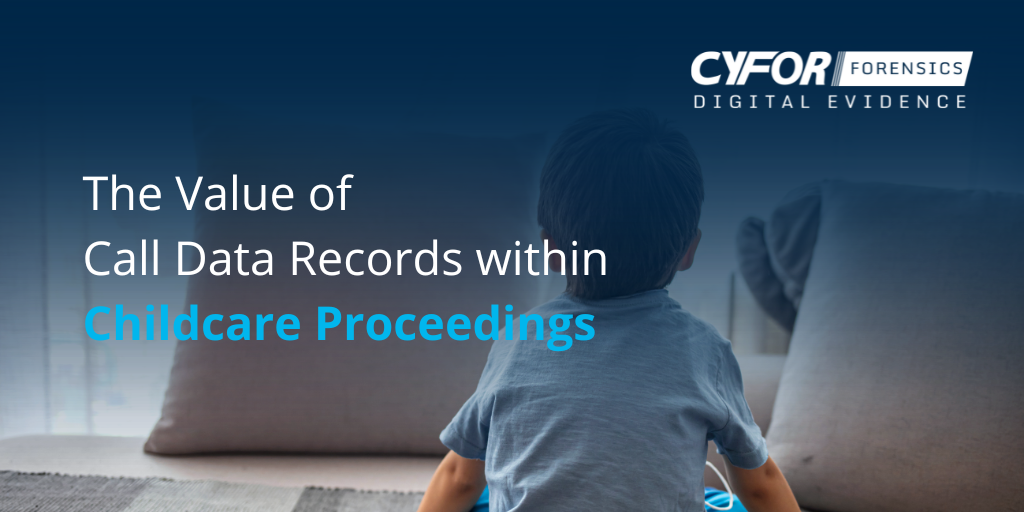The Value of Call Data Records within Childcare Proceedings

The Value of Call Data Records within Childcare Proceedings

Local authorities should not underestimate the value of examining call data records within childcare proceedings.
Over the years CYFOR have seen a considerable increase in mobile device examinations in childcare proceedings, with people spending countless hours on their mobile phones and social media. One of the challenges that CYFOR has to overcome is getting the physical handsets surrendered by clients. When we do, it is often the case that data has been deleted, the mobile device factory reset, or a different device being handed over to us for examination. It is in this instance that the examination of call data records within childcare proceedings cannot be underestimated.
Our cell site team is one of the largest in the UK, comprising experts who have over 40 years of combined experience in UK Law Enforcement. They can evidence not only the amount of communication between parties, but also where the device was during said communication without the owner of the device knowing, or without having access to the physical handset.
When considering your court orders for childcare proceedings, you might want to consider a court order for the full disclosure of Call Data Records (CDRs) for all phone numbers relevant to your investigation. This data must have been within the last 12 months, as the network providers do not hold the data for longer than 12 months.
Cell Site Analysis
The process of cell site analysis is more fully termed historic cell site analysis and can take one of two forms. The most basic form is an analysis of the Call Data Records (CDRs) which contain the cell site data for the phone use over the relevant period. The second form incorporates the inclusion of survey measurements. Survey measurements involve either the identification of cells providing service within a specific area or the discovery of the area over which a cell provides service. Both methods of analysis are carried out with the intention of aiding in the detection of the potential location of a phone or the relative locations of phones.
Cell Site Data
Cell site data is any supporting information provided by the network operator and any relevant survey measurements generated during the course of the analysis. The CDRs provide a breakdown of the activity of a subject telephone number in the form of calls, texts, and data connections. These will be provided with a start date and time, duration and/or end time, the nature of the phone use and information relating to the cell ID associated with the entry. The records will also include details relating to the identity of the SIM card and the handset used by the subject telephone number at the time of the communication.
The nature of the phone use will consist of the type of communication, the direction of that communication and details of the other party, or simply GPRS for data connections. Each cell used by a phone will have a service area. Whether this has been derived from survey measurements or estimated from network information and analyst experience and interpretation, within which the phone would have been located at the time that the cell was used.
CYFOR has seen huge success in the analysis of call data records within childcare proceedings cases, as this data cannot be deleted by the end-user and most users don’t even know it exists. Granted, we cannot get the content of the messages in this way, nor can we retrieve social media messages, but we can evidence communication, and we can on occasion evidence two devices arranging to meet, and then meeting at specific locations of interest.
Have you got a case that is being frustrated by non-compliance? Contact our experts today.
Call us today and speak with a Forensic Specialist
Send an enquiry to our experts
After submitting an enquiry, a member of our team will be in touch with you as soon as possible
Your information will only be used to contact you, and is lawfully in accordance with the General Data Protection Regulation (GDPR) act, 2018.